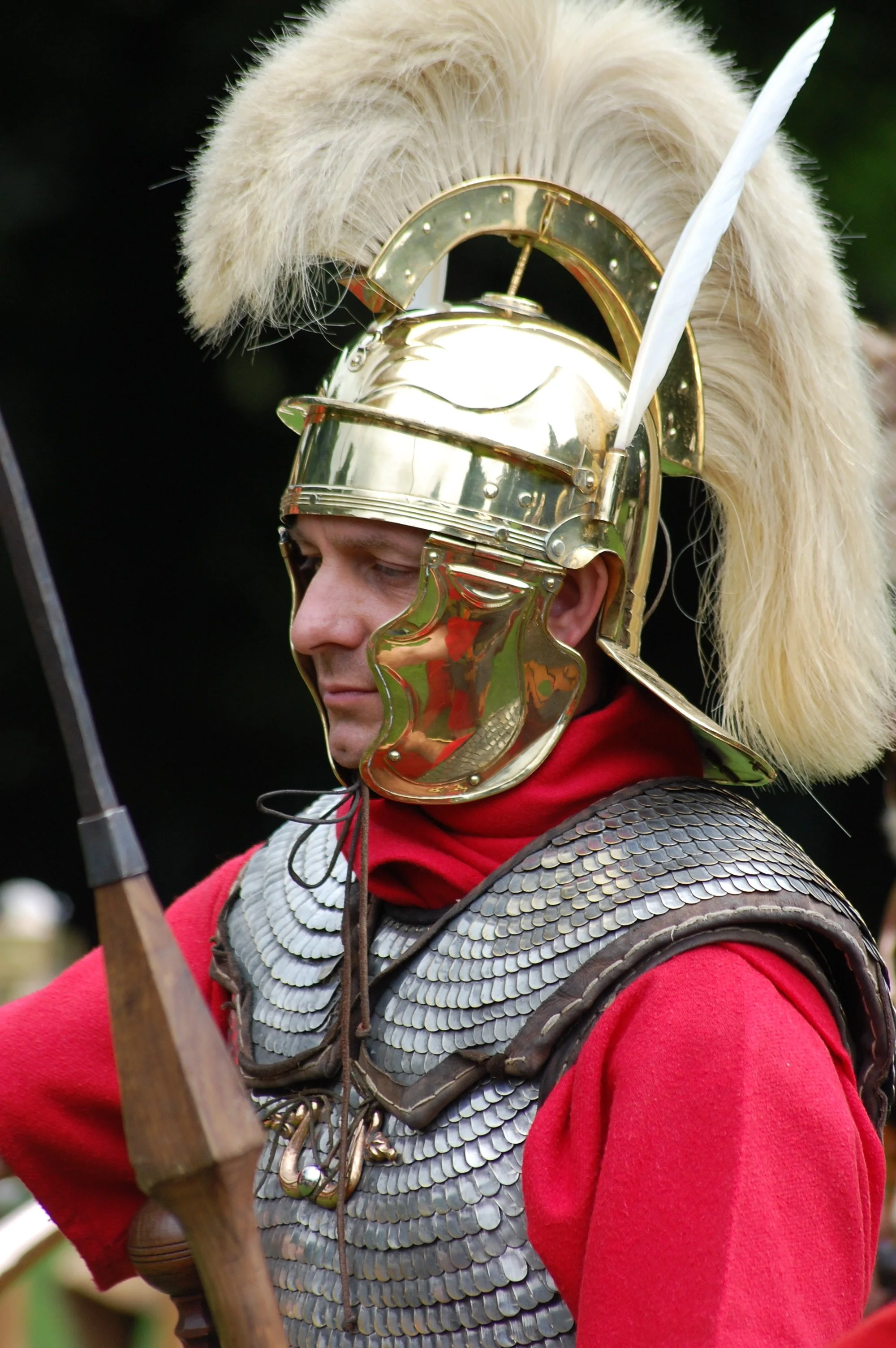THE ROMAN ARMY: Legionaries
The backbone of the army were the legions, heavily armed infantry, and exclusively Roman citizens. After the civil wars which brought the emperor Augustus (27 BC - 14 AD) to power, the Roman armies were reduced and re-organised.
He kept 28 legions, a total of about 150,000 men and these were supported by an equal number of auxiliaries. This was to remain the basic size of the army throughout the early years of the empire. At this time the bulk of citizen soldiers were still of Italian origin. However as the granting of citizenship extended, by the end of the 1st Century AD increasing numbers of non-Italians were recruited. Except in emergencies, recruitment was voluntary.
The legions which Augustus re-organised were divided into 10 equal strength Cohorts each of 6 Centuries of about 80 men.
During the reign of Vespasian (69 AD -79 AD) the 1st cohort of the legion was increased to the size of 5 double centuries, or about 800 men. This raised the fighting strength of a legion to about 5,120. Attached to each legion would also be a number of scouts, dispatch riders and non-combatants, so a legion's paper strength might well have been nearer to 6,000.
Each legion was self-contained, and would be supported by auxiliary units. The Romans had no separate engineering or artillery units, as in a modern army. These specialists were contained within the ranks of each legion, so it could build roads, construct temporary or permanent forts, carry out surveying, defend itself, and attack, using its own troops. An army would be made up of a number of legions, with supporting auxiliary units.
Compared with other opportunities for a fit young man, legionary service was a good option. There was good pay, food, housing, comradeship, and medical care. Army life could be brutal and corrupt, but the same could be said for other aspects of society at that time. After 25 years of service there was also a retirement gift of land for those that survived long enough to enjoy it, and immortality in the form of a tombstone, bought with their savings, for those that did not.
In the 1st Century AD, the legions were based mainly on the frontiers. Germany had the highest concentrations of troops, suggesting the greatest threat lay there. The legionaries would be supported by similar numbers of auxiliaries.
The classic image of the legionary in the late 1st Century AD.
As with most roman soldiers, the gladius is worn on the right hand side, so that the shield will not get in the way when it is drawn.
There is plenty of evidence to suggest that not all legionaries dressed in exactly the same way, and there may well have been differences within legions. Trajan's column, a monument in Rome, shows the army on campaign in Dacia, but the monument erected on the actual site of the campaign shows them in different armour, including scale. Importantly, it also shows that the army adapted its equipment to meet new threats, in this case by using armour to protect the sword arm.
Location of Legions
Legion II Augusta at Gloucester
Legion IX Hispana at Lincoln
Legion XX Valeria Victrix at Wroxeter
Legions V Alaudae and XV Primigenia at Xanten
Legion XVI Gallica at Neuss
Legion I Germanica at Bonn
Legions IV Macedonica and XXII Primigenia at Mainz
Legion XXI Rapax at Windisch
Legion X Gemina near Bratislava
Legion XIII Gemina near Budapest
Legions XI Claudia, VIII Augusta, III Gallica and VII Claudia
Legions IV Scythica, XII Fulminata and VI Ferrata near Antioch in Syria
Legions V Macedonica, X Fretensis, and XV Apollinaris in Judaea
Legions III Cyrenaica and XXII Deiotariana at Alexandria
Legion III Augusta in Tunisia
Legion VI Victrix in Spain
Legion I Italica in Italy
Legion XIV Gemina at Lyons











